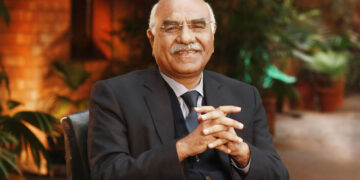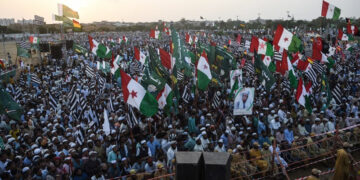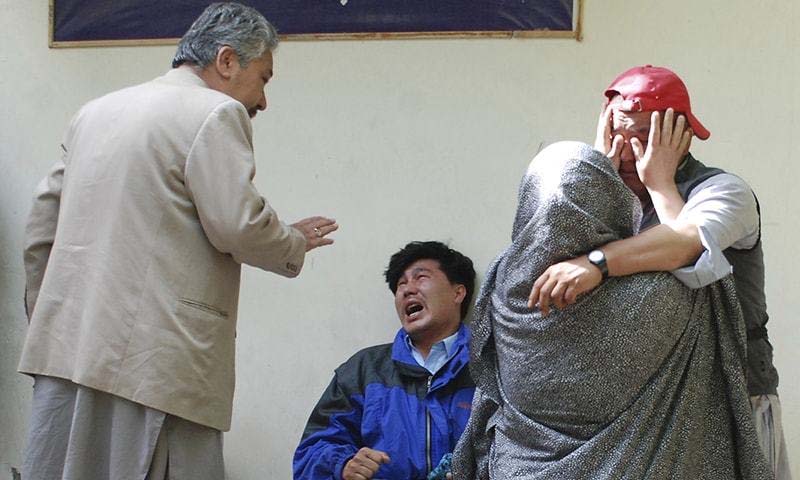 A poster child of globalisation, India has recently lost some of its shine as growth slows and the question of inequality and serious malnutrition and hunger hits the headlines.
A poster child of globalisation, India has recently lost some of its shine as growth slows and the question of inequality and serious malnutrition and hunger hits the headlines.
India is doing relatively well on economic growth — an annual average of 7.9 per cent — but as is often the case, poverty levels fall as incomes rise, but inequality grows. On international comparisons, India is middle-of-the-road in terms of who gets how much of the cake. But that is not good enough for those who get the narrowest slices. And such trends certainly make the government vulnerable in a populous democracy with 32 per cent under the poverty line.
How India meets the challenge of inclusive globalisation holds lessons for developing countries.Take for example, the fierce policy battles over the Food Security Bill, drafted with the ambitious aim of banishing hunger from the land. Mindful of the cost, the coalition government led by Congress wants to limit the sale of heavily subsidised food grain only to the very needy. But the National Advisory Council, chaired by the head of the ruling alliance, Congress President Sonia Gandhi, is pitching for a more ambitious scheme to provide 7 kilograms of grain a month to more than two-thirds of 1.23 billion people at something like an 80 per cent subsidy.
This argument builds on an earlier one, over the National Rural Employment Guarantee Scheme that started out in 2006 by promising work when demanded for one member of each family for up to 100 days in a year. In practice, some 50 million, more than 10 per cent of the workforce, got an average of about 50 days work last year. The critics have slammed the policy for corruption in distribution and its effect on driving up agricultural wages, making farming unviable in parts of the country. Paying out cash support to poor families, they say, would deliver better results at a lower cost.
The same critics make the same points when it comes to distributing subsidised grain. Those who defend the unemployment programme — among them, some leading members of Sonia Gandhi’s NAC — say that its benefits are self-evident, and they want a hike in the programme’s wage-rate. In pushing for an all-encompassing food security law, they point to embarrassing numbers on malnourishment, even as the Global Hunger Index has ranked India 15th among developing nations with high levels of hunger — the index is calculated on proportion of population that is undernourished, the proportion of deaths of children under age 5 and prevalence of underweight children under age 5.
Underlying the debate is disagreement on basic facts, about how many “poor” people are in India.The government’s basic poverty line was redefined for 2004-05 as 19 rupees per day in urban areas and 15 rupees in rural areas — 50 rupees today are equal to US$1. On that basis, government said that 37 per cent of the population was below the poverty line, revised to 32 per cent for 2009-10.
Civil society activists who sit on the NAC contend that the number of poor is much higher, and the chasm between those sets of numbers explains the debate over how much of the population needs to be covered by food security law. The problem with the activists’ figures is that they suggest a massively skewed income pattern, far more skewed than in most countries.
Another way to measure inequality is to look at the ratio of income between the top 10 per cent and bottom 10 per cent of the population. In India, the top 10 per cent earns 8.6 times more than the bottom 10 per cent. So India should expect to see inequality increase as its economy grows, the argument goes.
This trend feeds the critics of a growth-centric policy, who argue that the country has done better on economic growth than on human development — a composite of levels of education, key health indicators like life expectancy, and the like. The country’s rank on human development in 2011 was 134 in a UN Development Program list of 187 countries, 10 notches lower than its rank on the basis of per capita income, suggesting a below-par performance on human development.
Responding to the challenge on human development, the government has stepped up spending on health and education, achieving dramatic results in school enrolment and student retention. Meanwhile, government economists fret that the fiscal deficit is already too high and that an enlarged subsidy programme would spell macroeconomic trouble.
Is there a way of squaring the circle? Yes, if the large subsidies that go to the middle class could be cut to make way for programmes directed at the poor, if government delivery systems could be made efficient and less corrupt, or new methods adopted to ensure targeted delivery. Yet either plan would ruffle many feathers — and the media lends a megaphone to middle-class concerns, and the government would have to withstand a political firestorm. The problem is that the government, racked by scandal and riven by internal dissension, is in no position to run that gauntlet. – Khaleejnews












